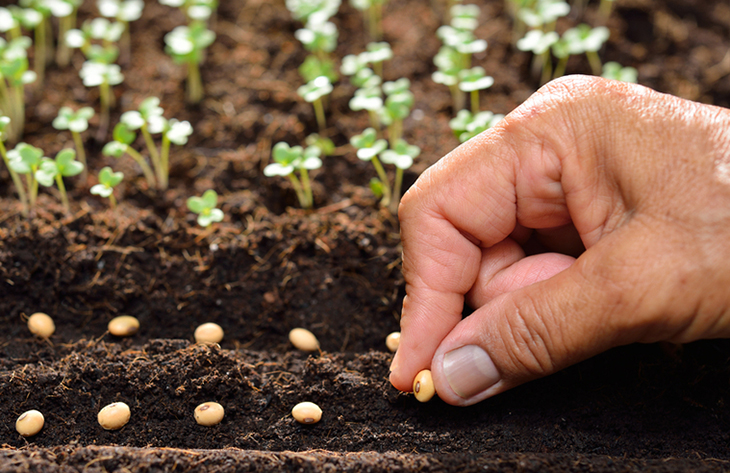
Growing vegetables successfully is all about proper planning. If you don’t plan ahead, you may wind up with parts of your garden that are empty or non-producing during at least some portions of the year. The best way to get around this problem is through succession planting. This type of planting helps ensure that every part of your garden produces vegetables throughout the entire season. There are several different approaches you can use, including the ones outlined below.
Relay Planting
With relay succession planting, you plant seeds multiple times during the year for a specific type of vegetable, following a predetermined schedule. This type of succession planting is most frequently reserved for vegetables that can only be harvested a single time. Some examples of vegetables that fall into this category include carrots, radishes, peas, beans, corn, beets, greens, spinach, and lettuce.
The process is quite simple. All that you need to do is put new seeds in the ground every couple of weeks. For instance, if you were planning on growing carrots, you would start by initially planting some of your seeds. A couple of weeks later, you would then put some more seeds in the ground, continuing this pattern throughout the growing season. After you harvest the first carrots that you planted, you can then plant that area again. This not only provides fresh vegetables all year long but succession planting allows you to extend your harvest make the most of the space that you have available in your garden.
Rotating Crops
If you don’t have a lot of room available, you may be able to get more out of your garden by using crop rotation as a method of succession planting. Even though you need to plan ahead to achieve success, this type of planting can be quite beneficial.
The idea behind crop rotation is to plant different vegetables during different times of the year, depending on when they grow best.
If you live in a climate where temperatures are relatively mild during the spring and fall but are warmer during the summer, you could plant a crop that grows well in cool weather during the spring. Once that has been harvested, you can then put in a crop that does well in warmer temperatures, even if it takes a little bit longer to grow. Finally, after that crop is harvested, you can put another cool weather crop in during the fall. For instance, you might do lettuce in the spring, tomatoes in the summer, and cabbage in the fall. This allows you to grow three different crops in a single part of your garden.
If you live in a warmer climate, on the other hand, you may want to try a cool-season crop during the winter. Then, in the spring, you could plant a crop that does better in warm weather. Once that has been harvested, you can put in vegetables that are capable of tolerating higher temperatures for the summer. After it cools down again in the fall, you could put in another warm-weather crop. In a situation like this, you might grow spinach during the winter, squash in the spring, okra during the summer, and tomatoes in the fall.
Rotating crops like this allows you to utilize your space in the most effective way possible, regardless of the growing conditions during each season.


